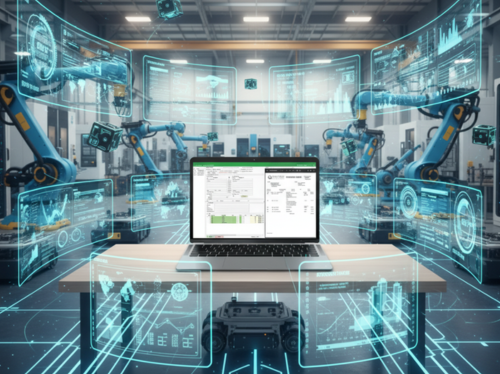3D printing: The shape of things to come

3D printing, also known as additive manufacturing (AM), is a technology that today extends to nearly every corner of industry. Often referred to as the ‘next industrial revolution’, many hail AM for its ability to transform manufacturing through the tool-free creation of everything from medical implants to rocket components. While a certain amount of hype may surround AM, many of the proclaimed benefits are indeed real. Machinery & Manufacturing chats with Martin McMahon, founder of M A M Solutions, about the benefits of this innovative process.
For the first time in decades, manufacturers can reimagine their production methods, incorporating advanced technology that not only improves efficiency but also enables new design possibilities. Companies that already have 3D printing as part of their process portfolio are today witnessing notable gains.
“One of the significant advantages of AM is its ability to minimise production costs,” says Martin McMahon. “Traditional manufacturing often requires large production runs to achieve economies of scale, prompting excess inventory that needs storage and incurs management costs. With AM, manufacturers can produce parts on-demand, reducing or even eliminating inventory and the associated overhead costs. Furthermore, AM eradicates the need for costly production tooling, reducing set-up times and enabling faster response to changes in demand.”
By design
AM offers unparalleled design flexibility, allowing manufacturers to produce intricate geometries that would be difficult or unfeasible to achieve using traditional methods. More importantly, AM can simplify designs.
“It’s possible to print highly complex assemblies with multiple parts as a single consolidated piece. In a nutshell, this simplification reduces material use, assembly steps and potential failure points, while lowering manufacturing costs and improving product reliability.”
Martin continues: “AM also allows for the creation of complex structures without additional assembly or special tooling. In cases where conventional manufacturing constraints are a barrier, AM allows engineers to think outside the box, either by simplifying complex designs or enabling bespoke products.”
In the fast lane
Initially, 3D printing gained popularity in rapid prototyping (RP) activities. Even as AM technology has evolved to support full-scale production, its RP benefits remain crucial for product development. The ability to produce prototypes quickly permits companies to test, refine and perfect their products more efficiently. In fact, AM enables a seamless transition from prototype to production, using one technology.
“AM can simplify the supply chain by reducing the need for tooling and allowing smaller production runs to become economically viable. Conventional manufacturing often involves long lead times and high tooling costs, along with complex supply chain logistics for components and sub-assemblies. By consolidating parts into single units and reducing reliance on external suppliers, AM creates a more streamlined, agile supply chain. It can enhance a company’s ability to meet fluctuations in demand and align with industry trends, like achieving net zero.”
As environmental awareness grows, manufacturers are under increasing pressure to adopt sustainable practices. AM supports sustainability by reducing material waste in comparison with conventional subtractive processes like machining; parts are built layer-by-layer using only the amount of material necessary. While AM may sometimes come with higher upfront costs, it can provide long-term environmental benefits that align with environmental and social governance (ESG) goals.
The game-changer
“Adopting AM might seem challenging, especially for companies familiar with more familiar manufacturing methods, but with the right guidance, it can be a game-changer,” states Martin. “M A M Solutions, for example, offers comprehensive advice to support businesses from start to finish in their strategy to adopt additive manufacturing., Leveraging expertise in metallurgy and laser-material interaction, we support with everything from raw material production to certified finished parts and process documentation, helping businesses to integrate AM seamlessly.”
The advent of AM marks a transformative period for the manufacturing industry. Its benefits range from cost savings, enhanced design capabilities and faster prototyping to supply chain simplification and environmental sustainability. When a manufacturer embraces AM, it positions itself for long-term success, meeting customer demands while aligning with industry advancements.
“For companies looking to stay competitive in an ever-evolving market, the strategic adoption of AM can unlock unprecedented value,” he concludes. “By recognising its potential and moving forward with a clear strategy, manufacturers will be ready for the future – driving growth, efficiency and innovation in ways that were once unimaginable.”








